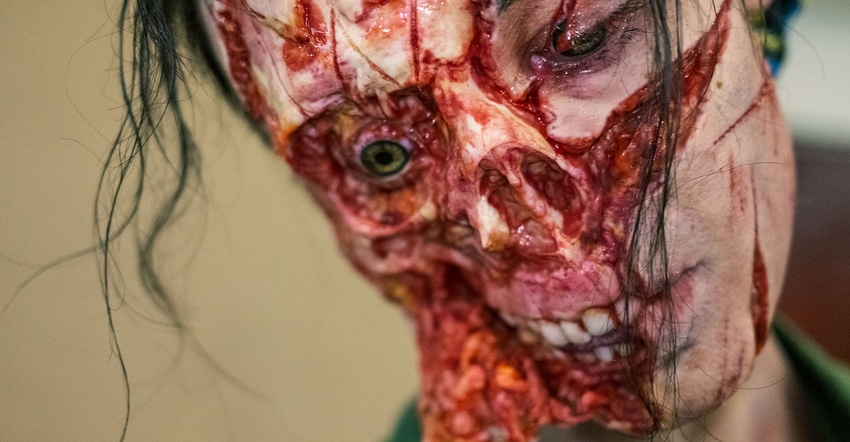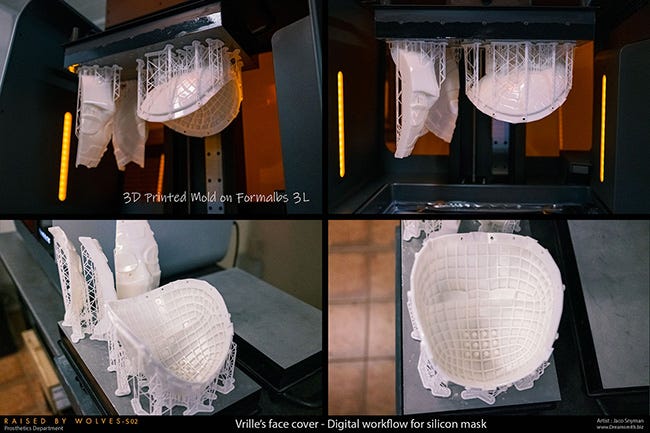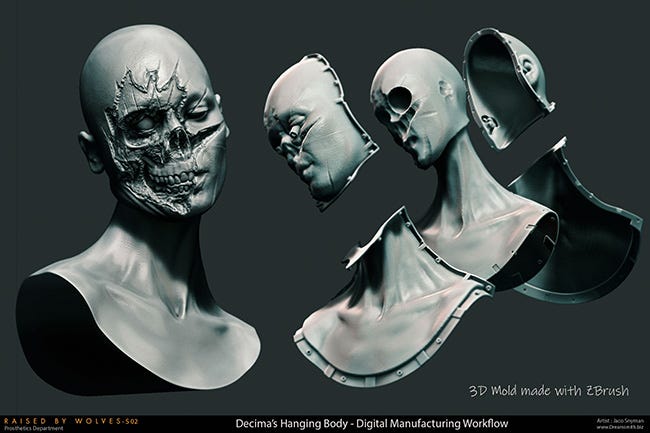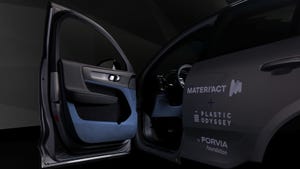In the real world, 3D-printed prosthetics are making people whole again, but in the fantastical realm of the HBO Max series, 3D printing is used to deconstruct characters to gruesome effect.
August 5, 2022

Designers and engineers worldwide give props to 3D printing every day. And 3D printing gives props back in the form of printed molds and models for movies and TV shows.
For the HBO Max sci-fi show, Raised by Wolves, prosthetics designer Jaco Snyman employs several Form 3L stereolithography printers from Formlabs to create molds and end-use models for the series, which focuses on two androids with the mission of raising human children. These printers, with a build chamber of 33.5 x 20 x 30 cm and resolution of 25 microns, have been used to:
Create a mold of an actress’s face overnight. Previously, it could take months to make such a model with epoxy resin and fiberglass.
Create intricate geometries and complex shapes for the Grandmother Skeleton and the mask of the character Vrille.
|
Fabrication of Vrille's face mask covering by 3D printing. |
Using 3D printing “has revolutionized the way we work,” Snyman said in a recent interview. 3D printing eliminates countless hours of sculpting work done by hand. To create the likeness of a woman depicted as hanging from the neck with half her face missing, “the Form 3L can print the entire final mold of the head with enough detail for the final cast to be indistinguishable from one made with traditional techniques. This enabled us to switch to a digital pipeline, working from a highly accurate 3D scan of the actress. It eliminated the need for the invasive life-cast process, making everything far more comfortable for the actress.”
|
Creating Decima's face by 3D printing eliminated the need to use the life-cast process, which is uncomfortable for the actor. |
Multiple Formlabs resins are used to create these molds and models:
Silicon mask: Rigid 10K resin
Actress duplicate: Draft resin and Rigid 10K resin
Biomechanical skeleton: Grey Pro resin
Paul’s bio-attack make-up: Grey resin
Snyman, founder of Dreamsmith Studio in Cape Town, South Africa, also uses hybrid workflows that combine 3D printing and traditional fabrication methods. For instance, in the case of a scaley skin “cocoon” for the character Paul, scale texture tiles were 3D printed and used to cast silicone scale tiles. Those tiles were then fitted together by hand.
|
Grandmother's skeleton was fabricated using Formlabs' Form 3L printer. |
Not only does 3D printing enable levels of detail not always possible with traditional methods, in some cases it produces props so complex — like the Grandmother Skeleton — that they would be “financially impossible” to create otherwise. The biomechanical skeleton “is a perfect example of a design created purely because we were able to 3D print it,” Snyman said. “Impossible shapes and interlocking gears have been printed for a while now, but what we needed was the ability to be precise at a useful scale. We needed a life-sized skeleton! The build volume of the Form 3L allowed us to print this entire prop in practical chunks at high resolution.”
Read an interview with Raised by Wolves prosthetics designer Jaco Snyman on the Formlabs blog.
About the Author(s)
You May Also Like





